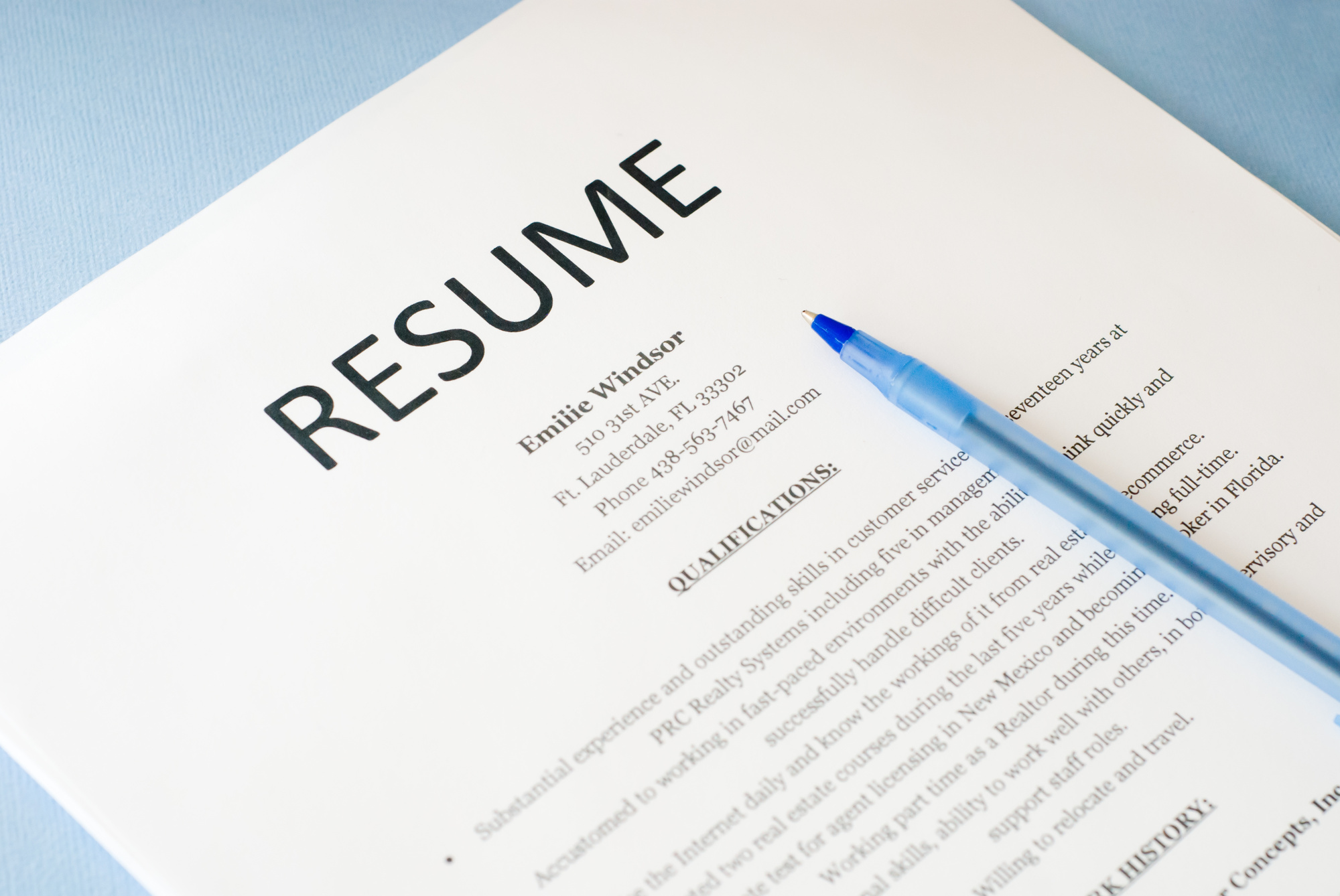A Professionally Printed Resume: 10 Tips When Printing a Resume

Your resume is a crucial component to landing any job.
It’s your opportunity to make the right impression with a company’s employer or hiring manager.
It’s how you get your foot in the door to nab that amazing position you’ve been hoping to get. It’s how you define yourself to potential employers, and what determines your next move.
In short, your resume has the potential to change the trajectory of your career and your life.
But many people overlook its importance when applying for employment.
According to an article published by Inc., every corporate position attracts an average of 250 resumes. That said, your resume needs to be top-notch if you want to be among the 4 to 6 candidates that are invited for an interview.
Does your resume have what it takes to stand up against the competition?
Read on to find out the secret to crafting a winning printed resume!
Go Pro with These 10 Tips for a Professional Printed Resume
You can’t judge a book by its cover, but you can judge a candidate by their resume. In fact, isn’t that what a resume’s for?
It’s not enough to send potential employers just any old resume. These days, your resume has to work hard to impress. Otherwise, there’s little chance that you will ever be taken seriously in the professional world.
So, what makes a resume sparkle and shine to employers?
Here are 10 tips for creating the perfect professional resume.
1. Choose Professional-Quality Paper
Does it have to have a widely-recognized designer watermark and be the most expensive option on the shelf? No.
Does it need to be better than plain everyday office variety paper? Yes.
Details that may seem unimportant to you, can have a major impact when shuffled among hundreds of others that share similar traits.
Use every acceptable opportunity to stand out. This means shelling out the extra pocket change to print a resume on high-quality paper.
If you aren’t sure what qualifies as such, no worries.
To make it easy on yourself, just go with the “resume paper” that’s sold by most pro printing service providers. Read more about the advantages of using professional services to print your resume.
2. Ink Is Best in Basic Black
There are certain areas when printing a resume that you can do things a little differently and get rewarded. This isn’t one of them.
Do not use your resume to share a rainbow. Basic black ink works just fine. In fact, it’s the only ink you should use to print a resume.
3. Your Delivery Counts
When delivering by mail, your resume should be neatly folded or lie flat in an accompanying envelope. Make sure that it’s folded evenly, avoiding any odd creases or crooked lines when the receiver opens to read it.
Don’t ruin your chances with the wrong envelope. Keep it professional with a resume-grade envelope in paper that matches its contents. Or opt for a legal-sized envelope that allows you to insert your resume lying flat.
4. Please, No Typos!
Nothing is tackier than sending a resume full of typos. Not only does it appear that the sender lacks decent spelling skills, but it may also come across as overly nonchalant to potential employers.
Be sure to run your spell check. Then proofread your document to ensure your grammar, fonts, and word-spacing are just-right.
When in doubt, ask a friend to give your resume a once-over to double check for errors before submitting it.
5. Let Your Content Have the Spotlight
Unless you’re applying for comedy hour, there’s no need to make jokes, add puns, or play on words.
Keep your language simple, direct and professional and let your skills and qualifications steal the show.
Your employer is not interested in hiring their next office clown. They want to know that you’re serious and capable when it comes to work.
6. Fonts: Keep Em’ Simple
Creative, bold lettering can be useful for designing a website or blog in certain industries. But they aren’t practical options for a resume.
Cutesy, whimsical fonts take away from your resume’s content. And they can be harder to read at a glance.
Chances are, the hiring team will be more impressed with standard, easy to read fonts. The simple, clean lines come off the page clearly. Anything else appears busy and distracting, especially when reviewing a stack of 250.
7. Save Your Colored Paper for Crafts
Brightly colored paper is perfect for do-it-yourself crafts and party invites. But it won’t help boost your chances of getting hired. In fact, it may hurt your overall job outlook.
Neutral shades, such as white or cream-colored paper, is ideal for resume printing.
8. Grab Their Attention like THIS
Sometimes, veering from the norm can be worth the risk.
For example, when a journalist student posted his resume in the form of a brilliantly-designed infographic, it went viral. Soon, the student’s resume-skills were featured by Huff Post, and on the sites of many other major media outlets.
However, we should warn that it takes guts, creativity, and precision to pull something like this off. Still, if you want to print a resume that’s one of a kind, it’s best to implement work-related design features that showcase your stand-out style and genius skill set.
9. Be Honest
While it can be tempting to tweak your resume so that it aligns perfectly with the job you’re applying for, if this means fudging the truth, just don’t.
In the professional world, honesty is still the best policy.
That’s not to say that it’s best to keep some details to yourself when you arrive at the interview stage. But for now, focus on highlighting your best self on paper.
10. Don’t Underestimate Your Experience
Many times, people think that they should omit jobs that aren’t related to their current career path. But this isn’t always the most beneficial strategy.
Even if the work isn’t related, the skills might be. And it can also show your future boss that you are able to adapt and succeed in more than one area.
Want More Ways to Boost Your Professional Image?
A perfect printed resume will probably get you in the door, but it’s not the only thing you’ll need to get hired.
Find out more ways to boost your marketability to potential employers and land a job you love!



